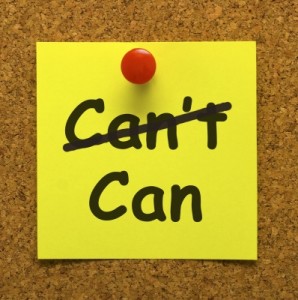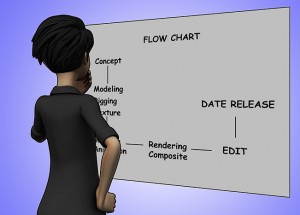استمع الى كيفية التنفس و ضيط ايقاع التنفس و تدريبات الاسترخاء بتبسيط

Serves the psychiatric patient, families, friends and the psychiatrists
استمع الى كيفية التنفس و ضيط ايقاع التنفس و تدريبات الاسترخاء بتبسيط

Dealing with Heartbreak
Something happens and the relationship falls apart. This hurts and puts a great deal of strain on your heart. However, things are never as bad as they seem. In fact, there are probably many wonderful outcomes and opportunities that will result from this breakup, however you must be on the lookout for those possibilities.
Stick with these principles, memorize and incorporate them into your life, and you will progressively develop the insights, willpower and resilience you need to move on from a broken heart in a more positive and empowering way. No longer will a broken heart put your life into a standstill. You will instead find the courage within to move forward — fully understanding that life is only a journey of experiences that you grow from in order to write the next chapter of your book
Summary
Having a positive attitude will not only make you a happier person, but people will enjoy being around you. Your upbeat attitude will become second nature with time. It can improve your home life as well as your professional life. Remember, you have the ability to control your attitude, it’s all up to you!
The meaning behind the Law of Control and the impact that it has on our lives.
The degree of physical and psychological control that we feel we have over our lives at any given moment in time determines how we feel around certain people, how we feel on a daily basis, how we feel under specific circumstances and conditions, and the types of emotions we tend to experience consistently throughout the day.
When it comes to controlling our life and circumstances, there are essentially two levels of control that we can become habitually accustomed to:
Under certain conditions, people and circumstances we can experience a high level of control.
Having a sense of a high level of control naturally leads to the experience of positive emotions, and it signifies that our lives are controlled by us (internal locus of control), and not by outside circumstances or people.
Under certain conditions, people and circumstances we can experience a low level of control.
Having a sense of a low level of control naturally leads to the experience of negative emotions, and it signifies that our lives are controlled by external circumstances and people (external locus of control), and not by ourselves.
When we learn to effectively take real or imagined control over the changing conditions and circumstances of our lives, then this naturally leads to lower levels of stress, higher levels of performance and a greater sense of overall achievement and confidence in our abilities.
Within this section we will analyze the benefits and drawbacks of the two types of control that influence our lives.
When we feel that we are lacking control over events, people, circumstances and the emotions we tend to experience on a consistent basis, then this naturally affects us in limiting and negative ways.
Here are the drawbacks of this type of control:
When we feel that we are lacking control over our lives and circumstances, our body naturally begins to panic. This state of hesitancy raises our levels of stress, anxiety and overall ability to think effectively under these uncertain emotional conditions. Likewise this leads to higher levels of procrastination, as we feel somewhat unable to effectively deal with the circumstances of our lives, and as such we tend to do nothing about it, which results in procrastination.
Sensing a lack of control over our lives can also lead to many other limiting emotions such as frustration, disappointment, overwhelm, guilt and anger.
Whenever you are experiencing these emotions, it simply means that at that very moment you are feeling as though you are not in control of your life. As such, you will continue to experience these emotions up until the moment when you feel that you have gained back some semblance of control over yourself, your life or your circumstances.
As we become overwhelmed by all the above mentioned negative emotions and limiting behaviors, is it really surprising that we naturally begin to make ineffective choices and decisions on a daily basis?
Our choices and decisions are a reflection of our state-of-mind and of our ability to effectively predict the outcomes of our lives before they occur.
If we feel that we are lacking a sense-of-control over our lives, people or circumstances, then this will naturally breed a sense of hesitancy and fear, which brings up thoughts of an uncertain future leading to indecision and the vicious cycle of procrastination.
When we feel that we are maintaining control over events, people, circumstances and the emotions that we tend to experience on a consistent basis, then this naturally affects us in empowering and positive ways.
Here are the benefits of this type of control:
When you experience a sense-of-control, you naturally feel good about yourself, your life and the circumstances you find yourself in. This therefore attracts positive and empowering emotions into your life experience, which likewise adds to your clarity of thought.
When you experience a sense-of-control, you are able to think without stress, anxiety and a plethora of other above-mentioned emotions that clutter your thoughts with negative outcomes.
When you experience a sense-of-control, you experience positive emotions and clarity of thought, which allows you to make better and more effective choices and decisions about your life and circumstances.
When you experience a sense-of-control, you naturally believe that your choices and decisions will lead to the outcomes you desire to bring forth into your life. This therefore raises your levels of motivation and inspires you to take positive action.
As a consequence of all the above, you take inspired and proactive action, thusly bringing forth into your reality the goals and objectives you desire to achieve.
Within this section we will discuss several strategies and present you with a variety of self-analysis questions that will enable you to gain a greater sense of clarity about your life, and subsequently allow you to seize back conscious control over your decisions, behaviors and actions.
Here are several self-analysis questions that will help you to gather the necessary information and resources you need to take back control over your life and circumstances.
What areas of my life do I control?
What areas of my life do I partly control?
How can I enhance my control within these areas? Socially, physically and emotionally?
What areas of my life don’t I control?
How can I gain control over these areas?
What am I unable to control?
How can I let go of the need to control these areas?
How can I learn to accept that not everything can be controlled all of the time?
Here we will focus on outlining some effective strategies you can use to gain back the control you desire to have over yourself, your life and the circumstances you find yourself in every single day.
If you take the time and effort to implement even some of these suggestions, you will undoubtedly develop the necessary frame-of-mind and willpower to control the outcomes within your reality.
There are certain personal qualities and attributes that if cultivated in the right way will naturally enable you to gain back control over your life and circumstances.
At any moment in time when you are suddenly feeling that you cannot control your life, events or circumstances, it helps to focus on the present moment.
Once there, you soon realize that within the present moment you can begin by controlling your breath, the movement of your body, hands, legs, etc. Soon afterwards you realize that you can also control how you talk to yourself, your thoughts and subsequently the emotions you are experiencing in the moment. Consequently, you begin asking better and more effective questions, which enables you to make better decisions about the current predicaments you are facing, leading to higher clarity of thought followed by proactive action.
Just remember that control always starts and ends in the present moment.
No matter how little control you have in the present moment, it always helps to cultivate the quality of persistence.
If you persist long and hard enough in creative ways, then the odds will eventually be stacked in your favor — enabling you to gain some semblance of control, which will lead to ever greater levels of control as long as you never give up and keep moving forward in a creative and flexible way towards your goals and objectives.
At times experiencing a lack of control is nothing more than bad luck. During these moments it is important to let go, to disassociate yourself from your experience, and wait patiently for the storm to pass. Additionally, all-the-while as the storm is brewing around you, keep your senses primed to spot opportunities that may arise. The moment an opportunity arises, is the moment you have an chance to get back in the game one small step at a time.
Foresight is the ability to see beyond your present circumstances, and into a future of potential pitfalls and/or opportunities.
By thinking ahead while maintaining an open-minded approach, you will develop the necessary foresight to identify the best course-of-action you should be taking within the next moment, thusly enabling you to take back control over your present circumstances a slice at a time.
When we are lacking control, it is very easy to become overwhelmed in the moment, and as a result we naturally tend to blur out the obvious answers that we are looking for.
Cultivating focused attention means that you are attending to the microcosm of details that make up your current predicament. It is after all within these details that ideas are born — where you will find the necessary answers and solutions to help you take back control over your current life condition and circumstances.
Cultivating discipline will enable you to become better aware of what is required to take back control over your present circumstances.
Discipline helps us to stay at a task longer, to spot minute details, while providing us with a greater clarity of thought — allowing for proactive action and the development of a deep sense of conviction about the task at hand.
When you are able to humor yourself about your current predicament or about your uncanny lack of control over your life circumstances, you essentially detach yourself from your experience, and associate yourself with the possibilities of finding an effective solution that will help you gain some semblance of control as you move forward towards your desired outcomes.
By taking the time to organize your time, you are effectively giving yourself the ability to control how you spend your time, where you spend your time, and how long you spend it. That by itself enables you a great deal of control over the events and circumstances of your life.
Additionally, by being disciplined and sticking to your time schedules — no matter how events or circumstances change around you — will help keep you productive and within your zone of control, thusly enabling for greater clarity of thought in the midst of turmoil.
Just by setting empowering life goals and daily objectives, naturally provides us with a sense-of-control over our lives.
When we work towards achieving an outcome, we naturally work from a place of control where we know our outcomes and understand what we must do to get them. That by itself will provide you with a greater clarity of thought enabling you to make better and more effective decisions about the predicaments that confront you on a daily basis.
The moments when we tend to lose a sense-of-control over our life or circumstances, are the moments that surprise us unexpectedly without prior warning.
These unexpected events cause great distress because we simply did not prepare for them before we took our current course of action. As a result we hesitate or feel powerless when moving forward, and thusly lack the necessary clarity of thought to overcome these unexpected setbacks.
To help us overcome these types of instances, we must take the time to develop effective contingency plans if things don’t go as we had expected. This can take some time and effort. However, you could save a lot of time by asking yourself:
What consequences could potentially result from this course of action?
How will these consequences impact my state-of-mind and circumstances?
How will I take control of these consequences in an effective and efficient way?
For many people change can be a positive and enlightening experience. However, for other people change can also mean a loss of a sense-of-control over certain aspects of their lives.
In many instances we must accept that change is inevitable, unavoidable and unpredictable. In such instances we must learn to appreciate this change for what it is, instead of trying to resist it with all our strength.
Change occurs because our energies are no longer aligned with our habitual patterns of behavior. As a result our circumstances change, our life conditions become somewhat foreign to us, and we lose that sense-of-control, certainty and familiarity. When this occurs, it is important to just accept things as they are and take notice of the opportunities that have presented themselves.
Change does not signify an ending, but rather new beginnings.
If you are unable to develop actual control over the events and circumstances in your life, then simply fake it!
Close your eyes and imagine yourself being in control of the events and circumstances that are causing you distress. Close your eyes and really think about it…
If I had unlimited resources, how would I resolve this predicament?
If I had no limitations, how would I gain control over my current circumstances?
You may actually find that by imagining being in control will actually provide you with that missing creative spark that will enable you to gain the clarity of thought you need to take control over your life circumstances.
When all else fails just simply let go of what you can’t control.
There is no point in hanging on and stressing about something that you cannot influence or control yourself. Just let it go, and move on with your life.
Sometimes things do have a way of working themselves out. And if they don’t, then at least you are not stressing about that storm raging outside. If you can’t control the storm, then what’s the point of stressing about it? Just let things go. ![]()
Finally, the one thing that we always control no matter what is going on around us is our mind (our thought process).
You are always capable — maybe not always willing but certainly capable — of controlling your thoughts, attitude, self-talk and the subsequent emotions you experience as a result.
No matter what is going on around you, there is never an excuse not to begin by taking control of your own mind. To do this, simply start by thinking and talking only about what you want to do, be, have and achieve. Who knows, you may actually find that all your answers lie within. ![]()
Our need for certainty and control is no doubt a primary driving force of human development. It’s something that has shaped the course of evolution, and it is undoubtedly something that will continue to shape each and everyone of our lives for all eternity. However having said that, we must also keep in mind that we are not really talking about external control, but rather internal control — the control you have over your thoughts, self-talk, attitude and beliefs. It is after all this internal control that has the power and influence to shape your life choices, decisions, actions and ultimate destiny

ما هو لوجو الشركة -كيف ستؤسس- رأس المال _ تمليك ام ايجار _ من شركاءكم


نفذ و التزم و ابدأ يومك مبكرا – ولا تقنع بما دون حلمك المنشود _ وكن صبورا
“ can you live with failure??’”
Have you ever considered how much time and energy you spend building walls and disguises?
Do your family, friends, or even your spouse really know who you are — stripped down to your fears, your shame, your limitations?
Can you even admit these things to yourself?

Think about the things you don’t want anyone to know. Think about the ways you don’t want people to see you. Think about the “you” that you hide from others.
In our efforts to suppress our vulnerabilities, we create a character version of ourselves — a much shinier, more sparkly self we put on display. Or we build up emotional walls high enough that no one can peer over and see the squalor of our shameful realness.

Like nearly all of you reading this, I had circumstances in my childhood that fostered pain and shame. When I was old enough to realize I could attempt to cover it up, I started shoveling sand over the unpleasantness as fast as I could. I very consciously decided I was going to remake myself and my life in the image of what I thought a perfect life would look like.
The thing I didn’t count on was the ever-present siren song of the real me under the makeover. What I underestimated was the power of authenticity buried alive under pretense. As much as I wanted to jettison my old self out of existence and remake myself into wonder woman, I didn’t understand that wonder woman was just me, as I am, with flaws, failures, shame, limitations, and pain.
What I underestimated was the power of authenticity buried alive under pretense.
Being vulnerable, being real, and loving your weaknesses and flaws as you would love your most darling child is powerful stuff. It’s empowering stuff. It’s in that moment of awareness when you become a whole and self-actualized person, capable of transcending your ego-driven, fearful self.
When your self-esteem is low, when you need the approval or praise from others to feel valuable, then you expend so much energy dancing around like a court jester to keep up appearances. When your self-esteem is low, and you can’t bear the idea of rejection, you hold others at a distance, never allowing them into your inner world — a world that truly is the most exquisite panoply of love, pain, heartbreak, fear, beauty, shame, and longing.

We are all the same — every single one of us. We want love, connection, respect, safety, and meaning. We want to be fully accepted for who we are, just the way we are. We want to be embraced and have someone say to us, “It’s OK. You are perfect.”
Those of us who understand the beauty in the entire package, the shared humanity, the elegance of our dark and light sides, long to find others who feel the same — others who have found the way to love themselves not just in spite of but because of their vulnerabilities.
Finding these people in your life is key to building your self-esteem through your vulnerabilities. Having people in your life who hold your pain with tender dignity, love, and safety is indispensable.
But the most important person who can foster this self-esteem is you.
I can now look back on my dysfunctional family from childhood and see the humor and pathos in our situation. I see that my experiences have made me wiser, more resilient, more empathic. I understand and love my efforts at recreating myself into “wonder woman” — even though they were misguided and desperate. Every mistake, every failure, every flaw is part of who I am and therefore part of who I love.
But here is a word of caution about embracing your vulnerabilities. Although vulnerability will promote self-esteem if managed carefully, it also exposes you to the possibility of further pain. As you navigate becoming vulnerable with yourself and others, here are a few thoughts to consider.
Embracing and loving who you are, as you are, doesn’t mean you shouldn’t strive for positive change and growth. In fact, loving and accepting yourself will afford you the power to define your next steps confidently. I love and accept that my body isn’t perfect, that getting older has impacted my appearance. But that doesn’t mean I’ve decided to be sedentary or stop taking care of myself.
When you become more accepting and loving of your own vulnerabilities and begin to let down walls and become more authentic, you may find that some people in your life drop away. They aren’t comfortable with the “real” you or can’t handle the raw power of seeing your pain or weaknesses. This can be shocking and painful if you aren’t prepared for it. Use discernment about who you invite in to your authentic world. Not because you need to cover up or be ashamed — but because you want to treat yourself with dignity and love. Seek out people who are equally real and vulnerable.
When you’ve spent a lifetime trying to cover up, obfuscate, use passive-aggressive behavior, or build walls, then acknowledging and exposing your vulnerabilities feels wildly uncomfortable and dangerous at first. Start by taking small steps in situations or with people who are safe. Share a life-long dream with someone. Talk with your spouse about an insecurity. Acknowledge a mistake with a co-worker. The more you work with vulnerability and share it in appropriate and safe ways, the more inner peace you will experience. The joy of being yourself and loving yourself as you are is intoxicating.
As you begin to love and accept your own flaws and limitations, you will become more compassionate toward others. Your compassion will allow you to be more accepting, less judgmental, a more loving friend/partner/parent. You can become a role model of building self-esteem through vulnerability by helping others navigate safely through their own fears and pain. By being this person for others, you are further elevating your self-esteem.
We say things like . . .
But all of these things (and hundreds of others) are just stories we create. We tell them over and over. We tell them so often, they feel real. Our minds accept them as real. Our neural pathways embrace them as real. And reality is perception anyway, right?
Sometimes I want to sob with gratefulness for having discovered (quite late in life), that these stories are not real. They are smoke and mirrors. But they have the power to hold us down like the iron fist of an invisible Goliath. “Stay put,” they tell us. “Stay put or you’ll die.” So we stay put.
Sure, there may be some truth to the stories we tell ourselves. Maybe something happened back in the day to launch our original tale. But with every telling, the tale gets taller. The story grows arms and legs and waltzes us around like a helpless rag doll. The story blindfolds and controls us.
But consider this for a moment: if someone said to you, “I will give you a million dollars if you prove your story wrong in the next year” — could you do it?
If you knew that a million dollars was waiting for you at the end of a year, would you do everything in your power to drop the story, reverse your beliefs, take bold action, and turn your life, your faith, your dreams around?
Think about it for a moment. For a million dollars would you be willing to . . .
Have you ever noticed when you have a huge positive (or negative) motivation all of our stories tend to immediately drop away? Boom. The rubber meets the road. Real reality steps in like a super hero. Like one of those mothers who can lift a car off her trapped child.
If I could give you a million dollars to help you with the motivation to drop your stories I would. But I think I have something better. I think I have something with more longevity.
Stop what your doing for a moment and look outside. In fact, walk outside. Look at the trees, the beautiful green and luscious trees. And the grass. And the blue sky. Listen to the birds singing. Breathe in the smells.
Now think about your family. Your parents. Your children. Your dearest friends. The people who take care of you or serve you at the store or in a restaurant. Think about all of these people and the love and humanity you share with them, even those you may not get along with or like very much.
Think about your body now. How you breathe without thought. Your lungs take in air and your heart beats and your muscles and bones support you. Think about the freedom you have to move around and get where you want to go. Think about all of your senses of touch and taste and smell.
Think about all of the things you can do that don’t cost one red cent. You can read books, listen to music, spend the day in a park. You can share a meal with friends, talk with your children, or stare at the stars.
I could go on and on and on with this.
Life is beautiful.
That is the real story.
Maybe you . . .
Quite often we don’t like ourselves because of our perceived inability to follow through, achieve goals, earn enough money, or reach a certain level of success. Much of our self-loathing comes from looking at what others have and viewing ourselves as inadequate because we don’t have it.
Acknowledge the life-altering importance of loving yourself. Recognize that everything good in your life hinges on seeing your own unique beauty and worthiness. Accept that all of your life successes, all love and acceptance, all happiness, begins with embracing and loving who you are right now.
On a daily basis, refocus your attention away from flaws and failures and on your uniqueness and positive qualities. Define those for yourself, even the smallest positive aspects you see in yourself, and write them down. Review them every single day. Remember that these qualities are as much or more a part of you than your flaws.
As you work to accept yourself as you are, do hard for your best version today. This ideal self should be based on who YOU are authentically, not crafted from the influences of peers, parents, the media, or anyone else. Who is your best self? How do you want to look, feel, think, act, and operate in the world? Write a “character study” of this yet-to-be-expressed self.
Carefully choose your friends and associates so you surround yourself with loving, real, caring, and supportive people. These are people who reflect back to you the beautiful qualities they see in you. Open your eyes to be able to see yourself as they see you and to accept the validity of their assessment.
Envision yourself as your own best friend. Begin to see your higher self as the best friend taking charge and talking to your wounded self. As your higher self, think or speak only the words that you would say to your best friend in times of crisis or self-doubt. Use words of approval, support, reinforcement, and praise. Don’t let your wounded self be the spokesperson for your psyche.
Set aside time to learn more about yourself — your personality, aptitudes, interests, etc. Take assessments, workshops, courses, read books and blogs. See yourself as an interesting multifaceted package to open and explore. Go beyond how you look, what you’ve achieved, how much money you have, etc. Find out what moves you, what brings you deepest joy, what true intimacy feels like.
Accept what you cannot change about yourself. Everyone has parts of themselves they can’t “fix” or alter — aspects of our appearance, personalities, our past experiences or choices. There are only two options here. You can forever struggle against those unchangeable things, or you can grow beyond them and choose the path of self-acceptance. Having these unchangeable things doesn’t have to condemn us to a lifetime of unhappiness. The opportunities for happiness in life are so vast — our flaws are infinitesimal inky droplets in a sea of potential for joyful living. They will dissolve and dissipate if you don’t focus on them.
If there are things you can change and want to change about yourself to become more of your ideal self, then embrace the privilege and glorious opportunity to effect change. Define the actions that change requires. Break the actions down into small and manageable goals. Every day, give yourself one small goal as a gift. It is a gift your higher self is offering from love and the desire to move you closer to your ideal.
Learning to love yourself requires patience. If you’ve spent years disliking or even hating yourself, it will take time to turn the ship around and forge a new direction. You will likely have times of slipping back into old beliefs and negative self-talk. But remember, if you see how the entirety of your life experience hinges on self-love, you will be tenacious and determined to love yourself.
Just as it takes practice to maintain a healthy and loving relationship with your spouse or child, it takes the same practice to maintain your love for yourself. You must remain actively mindful of it every day. Maintain your focus on your unique and beautiful qualities. Continue to make small and purposeful steps toward who you really are. Acknowledge and celebrate those steps. Reflect gratefully on all that you have and all that you are in process of becoming.
When we aren’t feeling great about ourselves, we turn to these things as a distraction and escape from the pain of low self-confidence. We numb ourselves with electronics or get lost in reading. None of these are bad things at the right time, but now is the time for forcing action in your life.

If you want to feel immediately successful and appreciated, volunteer doing something with children. Children offer unconditional acceptance and joy. They naturally appreciate adult attention and interaction. Volunteer to read to children in your local school. Or become a big brother or big sister.
Just one — and make it non-negotiable. Set aside the same time every day to accomplish your one goal. It doesn’t need to be big. What matters is that you do it every day. Your one goal can be part of a bigger goal that leads to a solid achievement.
Creating and writing for a blog is not only fun, but it also can provide a great service for people and allow you to build extra income. It involves a variety of interesting skills and allows you to express yourself and share your knowledge. Even if you don’t share your blog with others, it is a great way to chronicle your thoughts and ideas. If you want to learn how to create a blog, check out Start A Blog That Matters by my friend and online expert Corbett Barr or any of the ProBlogger Products.
When you develop speaking skills you develop natural leadership skills too.You simply can’t be part of this organization without building your self-confidence.
Psychologists have found that even if you’re in bad mood, you can instantly lift your spirits by forcing yourself to smile. Your body immediately releases endorphins when you smile, even when you force it. This sudden change in mood will help you feel better and release stress. Smiles make a person seem more attractive, sociable and confident, and people who smile more are more likely to get a promotion at work.

During those times when you might be watching TV, surfing the net, or reading a book — create something instead. Draw, plant flowers, build something, write a poem, make a vision board. Doing something creative and fun gives you a sense of achievement while being relaxing and non-threatening.
When we have low self-confidence, we tend to engage in regular negative self-talk. This just reinforces our bad feelings and low confidence. So mentally visualize your higher self as your good twin. The good twin only has positive, loving, and supportive things to say about you. Imagine the twin is always sitting on your shoulder. When you begin the negative self-talk, you turn to the twin and only listen to his or her voice. Arm the twin with real facts about why you should be confident and happy.
Having a life passion will naturally make you confident . When you feel engaged and excited about what you have going on in your life, self-confidence is an automatic by-product. If you don’t know what your passion is, make it your temporary passion to find out. Here’s a resource to help you.
Look around you at work or in your life otherwise. Where do you see a need that isn’t being fulfilled? Where is there a problem but no solution being provided? Where is there a lack of information or expertise? Ferret out that vacuum and learn all you can about how to create the answers and solutions. Become an expert in an area where you will be a scarce resource and in high demand. When people turn to you as the expert, you will feel confident in your value and sense of purpose.
| We all are guilty of it at some point in our lives…We compare ourselves to others and gauge where we are, based on what we observe others to be doing.
And let’s face it… Comparing ourselves to others, idealizing their best qualities while underestimating our own… is a self-sabotaging habit, which only hurts us in the end. What you should instead focus on is continually learning, improving, growing, and moving towards the highest possible version of yourself. Living with fulfillment, abundance and joy is not about piecing together images from other people’s lives, but creating our own best life. So the next time you find yourself comparing your life to someone else’s, practice these 5 steps: Step 1: Be aware – Remember that your thoughts are under your control, so the first step is to become aware when you start comparing yourself to other people. Take a moment to be conscious and ask yourself why you feel that way. Usually when you feel jealous or inferior, it’s actually something that you’re unhappy with inside yourself. When you address why you feel that way, you’ll be in a much better place to overcome it. Step 2: Practice gratitude – Instead of focusing on what others have that you don’t, focus on what you DO have and be grateful for it. Gratitude is so important and one of the fastest ways to shift yourself into a positive vibration. Step 3: Focus on your strengths – Each of us have unique strengths and talents, so stop discrediting them! Next time you start thinking about someone else’s successes, take a second and remember what you do well and be proud of yourself. Step 4: Accept imperfection – No one is perfect. If you don’t learn to accept your imperfections, you’ll drive yourself crazy 🙂 The less time you spend zeroing in on your tiny ‘imperfection’, the less time it’s there. The only reason you can always see it is because you’re always looking for it. Step 5: Concentrate on your own journey – Your life experiences are different to anyone else’s. You are unique and so is your journey. Take time to decide what truly makes YOU happy and what YOU want to accomplish, not what you think you should do or what others are doing. Remember, comparing yourself to others is nothing more than a bad habit, and one that you can break! So the next time you find your mind wandering to how others look, what they’re doing or how successful they are… Try out these 5 steps to shift your mind back to all of the amazing things about yourself and your life 🙂 |
1. Avoid overthinking.
Overthinking can make any issue seem bigger and scarier than it actually is. It can hold you back in life and from taking action.
What to do instead:
Set short time-limits for decisions.
This has worked well for me. A few examples:
For small decisions like if should go and do the laundry, start writing a new article or work out I usually give myself 30 seconds or less to make a decision.
For somewhat larger decisions that would have taken me days or weeks to think through in the past I set a deadline for 30 minutes or at least for the end of the workday.
2. Avoid the sea of negative voices.
Our happiness is greatly influenced by the people and the other sources around us.
If you swim around in sea of negative people and information that drag you down into fear, frustration and feeling powerless then that will limit your life.
What to do instead:
Figure out what the biggest time-wasters and energy-drains are among all those things that influence you.
What people?
What other sources like blogs, forums, books, magazines, music and movies?
Write those answers down. Then think about what people and sources that lift you up and make you feel happier about yourself and life.
Make a decision to spend less time with the negative sources and to spend the time you have now freed up with those positive influences.
3. Avoid getting stuck in the past or future.
Spending too much time in the past usually leads to going over old mistakes or failures over and over again and to wishing you could go back and do something about them.
And spending too much time thinking about the future usually leads to worries and to building monsters and nightmare scenarios in your mind.
What to do instead:
Spend more of your time in the present moment. You’ll feel lighter, things will feel easier and you’ll be more alert to appreciate the small wonders of everyday life.
Reconnect with what is happening right now by just sitting down and being still. Then spend a couple of minutes on focusing on just your breaths going in and out. Or on what is going on around you right now with all your senses. Listen, see, smell and feel what is happening in your little part of the world at this moment.
4. Avoid setting a too high bar for happiness.
A common mistake I used to make was to set a too high bar for my own happiness.
And so I usually only felt happy when I achieved something big, when I did something perfectly or when something unexpected and wonderful happened.
You don’t have to wait for those rare occasions to feel happy though.
What to do instead:
Tell yourself as you get out of bed in morning: today I will have a low bar for happiness.
By doing so you’ll take fewer things for granted. Your attention will naturally be more on what is happening in your daily life and you’ll be more grateful for the things there. Like the food, the weather, hanging out with a friend or a pet for a while, the small gestures of kindness and the small moments that pass by so quickly.
This has at least been my experience with this habit. And it has not decreased my drive to achieve things or to get to done. Instead it has made daily life lighter to live. And the path to what I want to achieve a happier one to walk on.
5. Avoid comparing yourself to other people.
Comparing yourself to other people can easily become a destructive and depressing daily habit.
You compare relationships, cars, careers, bodies and houses and at the end of the day your self-esteem is low and you feel like a failure with negativity buzzing around in your head like a swarm of irritating bees.
What to do instead:
Compare yourself to yourself.
See how much you have grown. How far you have come. The progress you have made towards your goals and dreams. And don’t forget to celebrate the small successes and steps forward too.
This habit will help you to see yourself from a kinder and more helpful perspective where you feel energized as you appreciate the steps you have taken on your journey. Instead of feeling drained and powerless to keep growing and to keep going for what you want out of life.
6. Avoid doing things too fast.
When you go fast pretty much all the time while walking, talking, driving or running then you tend to feel more stressed.
Your focus more easily becomes scattered and it becomes harder to think clearly.
What to do instead:
Slow down. Walk, talk, move, drive and bicycle slower.
The stress in your body and mind will float away. You’ll naturally be more in the moment. And you’ll enjoy all the smells, sights, sounds and experiences of life even more.
7. Avoid making just an enthusiastic January start when it comes to exercise.
The gyms are usually packed during January. So many want to get into better shape and start living a bit more healthy.
Then as February and March roll by the number of people tend to dwindle as a lot of New Year’s resolutions are abandoned.
What to do instead:
Getting regular exercise is so, so helpful both for the physical and mental health.
My workouts reload my mind with optimism and help me to dissolve inner tensions and stress. They make me feel more decisive and confident instead of worried and unsure.
But how can you make an exercise habit stick?
A few things that have helped me personally are:
8. Avoid pushing away how you deep down feel.
It is one thing to focus on what is positive in life.
But it is another thing to try to push away how you deep down feel about something. And it usually doesn’t lead to happiness even if you try to turn on a smile and force the positivity.
What to do instead:
Don’t force the positive thinking. If you have negative feelings or thoughts that pop up again and again then take some time with yourself to think it through. A pen and paper or a journal on your computer can help you to think more clearly.
Or you can talk about it with someone close to you.
After you have accepted and processed how you think and feel about this then write down a small plan – maybe just a step or a couple of them – that you can take action on to move yourself out of this situation and into something better.
And after that get going and get the ball rolling by taking the first small and practical step forward.
9. Avoid spending too little energy and attention on what truly matters to you.
It is easy to get lost and misspend too much of your day and week. On things you might just do out of habit or because you feel you should. On busy work or on things that honestly deep down isn’t that important to you.
What to do instead:
Get your priorities in check. Focus on what truly matters for YOU (and not what matters most to your boss or parents etc.)
Ask yourself: what are the top 4 most important things in my life in 2014?
Maybe it is your family. Or your hobby and to become a better photographer. Or your health and getting in shape. Or an important project at work or in your own business.
Sit down, really think about it and reduce what matters to just the essentials.
Then take out a pen and a small piece of paper and write down just your top 4 priorities for 2014.
Put that note where you cannot avoid seeing it every day. Like in your work space. Or beside your bathroom mirror or on your fridge.
This will help you to keep your focus on the right track every day.
10. Avoid waiting for someone else to make your year happier.
Don’t make the all too common mistake of waiting for someone else to create the year you want to have. That usually leads to much waiting and frustrations.
What to do instead:
Be proactive. Get the ball rolling yourself.
Take action and take the first small step forward with making the changes you want to make to create the happiest year so far.
Set up a coffee date or an evening at the pub with those most positive people in your life. Set the low bar for happiness as you jump or drag yourself out of bed in the morning. Go slow today.
Sit down tonight and write down those four most important things for you in 2014.
And if it feels difficult and you start to procrastinate then remember that you can always take smaller steps forward. Do whatever is needed to reduce that mental barrier and to get yourself to begin or back into taking action again.
smarter snacking.


Stick with these principles, memorize and incorporate them into your life, and you will progressively find the strength within yourself to forgive others for the hurts they’ve inflicted on you. Likewise you will also find the strength to forgive yourself for the mistakes you’ve personally made — thereby releasing yourself from the incredible emotional burden you’re carrying within.
Professor Ahmed Okasha, gives a hint , about subtyping of schizophrenia, and why undifferniated schizophrenia is a weak diagnosis!
Ahmed Okasha M.D., PhD, FRCP, FRCPsych, FACP(Hon.) is an Egyptian psychiatrist. He is a professor of psychiatry at Ain Shams University, Cairo, Egypt. He wrote many books and articles about psychiatry and mental disorders. He is the first Arab-Muslim to be president of World Psychiatric Association from 2002 to 2005.
The words you use throughout the day are nothing more than labels you give to your feeling and emotions.
They are simply descriptions of your sensory experiences that help you gain a deeper understanding of your life and circumstances.
……….However, these words are only generalizations you make about reality. They don’t necessarily describe reality “as it is” but rather describe your understanding of reality as you perceive it to be. Therefore the words you use are simply interpretations you make about things — for better or worse.
You give your experiences “life” with every single word you speak. As such, things don’t really have any meaning if you don’t take the time to give them a label.
You might for instance label something as being “disgusting” or “delightful”. Each label provides a different interpretation of your experience, and each label consequently gives you a very specific kind of feeling. You will therefore feel good or bad dependent upon the label you give to something. In other words, how you feel at any moment in time is heavily influenced by the words you use to describe your experiences.
Your words are therefore very much assumptions that distort your experience of reality. These assumptions are used to make sense of what’s real or isn’t real; what’s true or isn’t true; or what’s painful or pleasurable. The key understanding here is that these assumptions are yours and yours alone.
Your words are in a ways biased interpretations you make about people, events and your environment. These interpretations are based on your beliefs, values, self-concept, meta-programs, human needs, psychological rules, thoughts, perspectives, and much more. They are therefore in essence nothing more than psychological anchors we use to induce specific kinds of emotional states.
You experience a particular emotion because the words you use are psychologically anchored to that particular emotion. In other words, each word you speak makes you feel a certain way, and therefore using the “word” itself is a primary reason why you are feeling a certain way at any moment in time. This is of course good news and bad news. It’s good news because it means that you are fully in control of the emotions you will allow yourself to experience at any moment. However, it’s bad news because you normally induce your emotional states without conscious awareness.
Over the course of your life you have had your ups and downs. You’ve experienced painful moments, and you’ve also experienced numerous pleasurable moments. At one time or another you experienced each of these moments for the very first time. And it’s during that “first time” that you made certain assumptions and generalizations about that experience that formed the foundations of your beliefs about “that experience”.
At the youngest age, before you even knew how to talk, you would observe the facial expressions of your parents and you would listen to the words they consistently used. Through your observations you made certain assumptions about what is a painful and what is a pleasurable facial expression. However, you didn’t quite know at the time how to verbalize these experiences. But soon that would all change.
As you learned how to speak, you started to give labels to these facial expressions. You also began to label those same emotions within yourself. You would for instance smile, and call that “happy”. Or you would frown, and call that “sad”. Your facial expressions and other people’s facial expressions now had a label, and these labels gave your emotional life more meaning.
As you continued to mature and develop over the years, every facial expression you made and the way you used your body was given a specific kind of label that described that particular state-of-mind. And it’s at this early developmental stage that words began to attach themselves to specific kinds of emotions and feelings. These words in essence became your emotional anchors. You no longer needed to express yourself through your facial gestures or through your body language to experience the corresponding emotion. Now all you had to do is speak the “word” and you would automatically feel the corresponding emotion. However, there was one problem.
The problem was that the words you spoke “boxed you in” to experiencing things a very specific way. You no longer gave yourself the freedom to allow your body and face to do the “emotionalizing” for you. It was now the words you used that provided the trigger you needed to experience a particular kind of emotional state. These words now formed the foundations of your emotional experiences.
All this might very well be advantageous. After all, communicating through words seems much easier than trying to get that same message across using your body and face. However, you were no longer communicating how you really felt, you were instead labeling your state-of-mind a certain way; thereby triggering a specific kind of emotion. In other words, your verbal language was now directly influencing your state-of-mind, and you therefore experienced a certain emotion just because you decided to label your state-of-mind a specific way.
This is all quite significant, however things become a little more problematic when you consider that the labels you give to certain experiences are based on how you’ve been conditioned over a lifetime. And how you’ve been conditioned results from what you’ve observed and how you’ve handled pain and pleasure in the past. And the big problem with this is that these labels you give to your experiences might very well have absolutely no basis in reality because the words you use are nothing more than interpretations of experiences that are unique to you, and you alone.
Someone might for instance spill some coffee on you. Based on your past conditioning you might immediately see this as a threat; and a natural response to a threat is to feel angry. And so in your head you label this incident as something that makes you feel angry, and you therefore start yelling at the other person who looks back at you in absolute astonishment.
You learned this response back when you were a child through observing your parents. Your dad might have for instance spilt some wine accidentally on your mum’s new jeans. She reacted aggressively and started yelling at your dad; telling him how upset and angry she was. And it was this event that shaped your understanding of what it takes to feel angry. And so, years later when someone spills a cup of coffee on your work clothes, you too react in a very similar way by feeling angry about the situation. However, things could have been very different.
What if after your dad had spilt the wine on your mum’s jeans, your mum responded in a very understanding manner? That experience would then be ingrained into your psyche, and it would probably take a lot more than a coffee stain to get you feeling angry. This therefore suggests that your experience of anger is only your interpretation of reality; and there are certainly other interpretations you could make depending on the labels you give to those experiences.
All this is very significant because every single day you are now giving labels to your life experiences without even giving them a second thought. You respond in anger because you label yourself as feeling angry; you get frustrated because you label yourself as feeling frustrated; you feel stressed because you label yourself as feeling stressed, etc.
It’s important to understand that you don’t have to feel a certain way about something. You can most certainly choose to feel a very different way about things, however in order to feel differently about things you need to label these experiences in a very different way.
When for instance you think about feeling anxious, at that moment your facial expressions and your body will respond in a certain way that represents an anxious person. However, when you label yourself as feeling excited, then immediately your facial expressions change, your body language transforms, and your expectations shift. You are no longer feeling anxious because when you label yourself as feeling “excited”, this feeling of excitement is already rooted into your psyche in a very specific way. Your body, your facial expressions, and your entire being responds to excitement in a very different way compared to how it responds to anxiety. You have therefore transformed how you will respond to a situation based on the label you have given to that particular experience. And it all started with the language you decide to use.
Think of words as something that not only transforms your state-of-mind, but also something that changes the course of your entire life.
The verbal language you use literally transforms your experience of reality. It influences your beliefs, evaluations, choices, decisions, perceptions, thoughts, actions, attitude, physiology, habitual patterns, behaviors, etc. In fact, every aspect of your psychology is transformed as a result of the words you choose to use to describe your state-of-mind in any situation. This literally means that your words will essentially determine what you will try or what you will fail to try, which ultimately shapes your expectations and your results moving forward. In other words, your verbal language shapes your destiny — for better or worse.
When for instance you give the label of “fear” to an experience; consider for a moment what comes along with that fear. With fear come certain expectations, beliefs, thoughts, physiological responses, and behaviors. And all these things consequently influence the choices and decisions you will make and the actions you will take moving forward. Therefore, your label of “fear” isn’t some isolated psychological event that has no relevance for your future. It’s a rather significant event that can dramatically shape your life in immeasurable ways.
What all this suggests is that the words you use to describe your state-of-mind at any moment in time actively shape your destiny. It’s therefore absolutely paramount that you get into the habit of transforming your vocabulary in a more positive and helpful way that is in-sync with the type of life you would like to live.
One of the significant challenges that most people will have moving forward is that they simply don’t have enough words to express how they are truly feeling.
Many people will be familiar with common emotions such as stress, anxiety, worry, anger, overwhelm, frustration, happiness, love, hate, shame, etc. However, there are many more emotions. And because there are many more emotions, there are therefore many different labels you could potentially use to help alter your state-of-mind in any situation.
Just imagine for a moment having the freedom to describe how you’re feeling in so many different ways. What could be the possibilities? How rich would your life be from an emotional perspective?
When you have a limited vocabulary, you live an emotionally impoverished life. On the other hand, when you have a rich vocabulary, you live an emotionally enriching life. And because you have so many ways to describe how you’re feeling, you therefore have many different ways to perceive and interpret your experiences. And because you have “choice”, you can now consciously choose the labels you will use that will best serve you moving forward. You are no longer at the mercy of your limited vocabulary; you are instead the one shaping your life and your destiny with purpose.
In order to transform your language patterns, you need to first become conscious of the words and phrases you tend to use throughout the day. Furthermore, you need to identify how these patterns are affecting your choices, decisions and actions. Once you have a clear understanding of how these patterns are influencing your life, you will have the necessary motivation you need to make some positive changes moving forward.
Here is a three step process that will help you gain some clarity in this area:
Let’s first begin by analyzing your language patterns. This is not so much about how you talk to others, but rather how you tend to talk to yourself and how you describe the positive and negative experiences in your life.
Have a think about the words you tend to use throughout the day. Specifically think about the words that cause you the most anguish. These will be words that typically arouse negative feelings and emotions. Ask yourself:
What words do I habitually tend to use each and every day?
What emotions do these words tend to trigger?
Why do these words tend to trigger these particular emotions?
How do these emotions affect me? How do they affect my life?
For the purpose of this exercise, make a list of 20 words that you might typically use that arouse limiting emotional states. However, don’t just limit yourself to words alone. You can most certainly list short phrases as well. Although the shorter and more succinct the phrases, the better.
Once you’ve completed this exercise, feel free to progress to the next step.
Your second task is to become consciously aware of how these particular words and phrases developed over a lifetime. We’ve of course already touched upon this area within the previous section, however it’s important now to take a look at your own life and pinpoint how the words and phrases you consistently use have been conditioned into your psyche.
To begin with, think back to your childhood experiences and recollect how your parents and guardians might have influenced you. Ask yourself:
How did my parents influence these words and phrases?
What influence did my peers have on my vocabulary?
What have my parents and peers got me saying?
How accurate are these labels I give to my experiences?
As you work through these questions, remember to reflect upon the typical words and phrases you identified within Step One of this process.
Now, have a think about the television programs you watch, the music you listen to, the newspapers and books you read, and ask yourself:
How has the music I listen to shaped my language patterns?
How has the media shaped my language patterns?
What typical emotions do I tend to experience as a result?
What about the books I read? How have they influenced my language patterns?
Becoming aware of these “influences” will make you more consciously aware and vigilant of your surroundings in the coming days and weeks. You might even start second-guessing some of the words you use to describe certain emotions and experiences. And that’s essentially what must happen. Awareness is after all the first step to long-term change and transformation.
The final step of this process requires identifying the typical language patterns you tend to use throughout the day, and the effect that these patterns have on your life. Ask yourself:
What language patterns do I see emerging here?
How do these language patterns shape my beliefs and expectations?
What assumptions do I tend to make as a result of these language patterns?
How are these language patterns affecting the choices and decisions I make?
How are these language patterns ultimately affecting my life?
Are they empowering or limiting me? In what specific way?
Really have a good think about how you use words and phrases throughout the day and how these patterns tend to affect your emotional state-of-mind. The verbal language you use is after all shaping your experience of reality. And if you don’t appreciate the emotions you experience throughout the day, then maybe it’s time you take conscious control and started altering those language patterns with purpose.
Throughout the day we all have certain things we say to ourselves without any conscious thought or effort. Most of these words we use are relatively harmless and don’t have a great impact on our state-of-mind, on our beliefs, or on our expectations. However, there are certain words and phrases that can actually hurt us.
These language patterns seem kind of harmless on the surface, however each word and phrase has a hidden agenda that provides you with insight into your true intentions. Consider for a moment words and phrases such as:
I wish…
I should have…
I would have…
I could have…
I can’t…
I might…
I have to…
I’ll try…
If…
Now, on the surface these words seem rather harmless, however consider what some of these words imply. For instance, when you say “I should have…” this implies you’re feeling guilty. Or, when you say “I could have…” this implies that you’re trying to take credit for something. Or, when you say “I can’t…” this implies that you’re focused on the negatives. Or, when you say “if…” this presupposes you may not. Or, when you say “I’ll try…” this implies that you are already making an excuse for failure in advance.
As you can see, what you say may have one meaning on the surface, however there is a completely different meaning below the surface, and it’s this “hidden” meaning that is manifesting at an unconscious level in your life.
The language you use comes attached with a set of beliefs, expectations, psychological rules, etc. All of these aspects of your psyche come to the surface as you use these language patterns, and when they come to the surface they limit your resourcefulness in that particular situation.
It’s therefore absolutely paramount that you become consciously aware of the consequences of each word and phrase you use. Furthermore, you must be willingly choose to use a different set of words and phrases that will help you to become more resourceful in each situation.
If you’re finding this transition difficult, then it might be worthwhile to get into the habit of using affirmations. Affirmations will help you to stay focused on the right things in the right way.
Instead of saying to yourself that “I can’t…”, choose instead to use a positive affirmation that is stated in a present tense:
I can do this…
I am good at doing this…
This can be done…
This is possible…
I believe in myself…
These affirmations will at the very least focus your mind on more positive outcomes. And when you’re focused on more positive outcomes you instantly become more aware of possibilities and opportunities you could potentially take advantage of. These affirmations also make you feel better. You are therefore no longer wallowing in self-pity, but rather focusing on things you can do to help improve your circumstances.
Affirmations do however have their limitations. They are limited because they are passive in nature. They don’t actually encourage you to do anything; to make a decision; to take a specific action. However, questions can do this for you quite effectively.
When you ask a question you naturally involve your brain with finding an answer to that question. For instance, instead of saying “I can’t…”, choose to ask the following set of questions:
What if I could do this?
If I could do this, how would I go about doing it?
What would be possible if…?
How would another person do this successfully?
What small thing could I do right now that could prove to me that I can get this started?
As you ask these questions you are already engaged and searching for answers. Of course, you might not immediately acquire the answers you are after. And that’s perfectly okay. If you don’t have the answers, then ask a different set of questions that can help you acquire these answers. In fact, the more questions you ask, the better you will feel because more questions bring about more possibilities, and when you have more possibilities you have more options available moving forward.
It’s also important to note that every question you ask makes you more resourceful. And the more resourceful you become the better questions you will ask, and the more answers you will have that can help you work through your circumstances successfully.
Have a think for a moment about the words you typically use on a daily basis and the negative emotions that are often associated with those words. Now imagine NEVER AGAIN using those words in your life. Ask yourself:
What if I never used this word ever again in my life?
Without this word in my vocabulary would I ever feel the emotion that this word represents?
Maybe the emotion would be less intense or different without this word?
How would my state-of-mind change without ever saying or thinking this word?
Of course not using one particular word might force you to use another word to describe what you’re experiencing or feeling. And this is perfectly understandable. It’s all about letting go of those negative and limiting words that put you in a very poor state-of-mind. These are the words that you must eradicate from your vocabulary.
Consider for a moment:
What emotions would I never want to experience again?
What kinds of words represent these emotional experiences?
What alternate words could I potentially use to label these experiences?
Think through all the negative emotions you ever experienced and write down the words you typically use to label those emotions. Now, cross these words out with a pen and write down alternate words you could use that describe those same emotional experiences. Keep in mind though that you have two options you can select from:
Here are some examples:
Now consider for a moment what eliminating all those capitalized words from your vocabulary would mean to you. Not only will you not feel those emotions as you have felt them in the past, but you will now become more resourceful then ever before.
For instance, instead of feeling frustrated you now describe “frustration” as fascination. This is advantageous because when you’re fascinated you think differently about the situation, you ask better questions, you have different expectations, etc. You essentially become a very different person in this situation just because you “flicked the switch” from frustration to fascination.
Or, let’s take a look at another example from this list. Imagine you eliminated the word “failure” from your vocabulary. What would be the significance of this? Well, for starters consider how you feel when you label yourself as a failure:
Do you feel upset?
Do you feel miserable?
Do you feel inadequate or incapable?
What else might you feel?
Now, think about how you feel when you are in a state of learning:
Do you feel curious?
Do you feel excited?
Do you feel intelligent?
What else might you feel?
Given all this, which state-of-mind do you think would be more appropriate to experience in any situation? Of course that answer would be a “learning” state-of-mind. Why? Because when you’re in a state of “learning” you naturally become more positive and resourceful. You no longer pity yourself, or think about how miserable your life was when you labeled yourself as a failure. Instead, you are now asking better questions, you are looking at expanding your horizons, you are grasping for new opportunities and experiences, etc. The possibilities are literally endless. And the best news about all this is that in a state of learning you access a different set of beliefs that are built upon the idea of “learning”. These beliefs are certainly not accessible when you label yourself as a failure, because from a “failure” mentality there are no empowering beliefs. All beliefs built upon the idea of failure are there to bring you down emotionally and discourage further effort. And that certainly isn’t an optimal way to live your life.
Some words or phrases you use might be deeply ingrained into your psyche. In fact they are so deeply entrenched, that even thinking about using another word or phrase can create an incredible amount of internal resistance. It may even bring-up all these limiting beliefs to the surface that make it very difficult for you to put yourself into a more positive state-of-mind.
In such instances, you should tone down the changes you are making. Therefore, instead of transforming a negative word or phrase into a positive word or phrase, choose to replace that negative word with another word that is of a lower negative intensity. For instance, you could turn “I’m feeling angry” into:
I’m feeling a little irritated.
I’m feeling somewhat uncomfortable.
I’m feeling rather disenchanted.
Each of these words still “border” on the negative side, however they are not filled with as much emotional intensity as “anger”, which means that you will not experience as much resistance to these words as you would if you interpreted your anger in a positive way, e.g. “I am feeling passionate”. In this instance, “passion” might be a little too far of a stretch.
Over time as you feel more comfortable using these “less intense” words, you can switch to using more positive words that will allow you to become even more resourceful in these kinds of situations. It’s all about making progressive change that is believable over an extended period of time.
Don’t wast time , don’t post pone and re-start immediately .
1. Focus on form, not weight. Good form means aligning your body correctly and moving smoothly through an exercise. Poor form can cause injuries and slow gains because you aren’t isolating muscles properly. “I often start people with very light weights because I want them to get their alignment and form right,” says master trainer Josie Gardiner. “It’s good to start off using light to moderate weight when learning an exercise routine.” Concentrate on slow, smooth lifts and equally controlled descents.
2. Tempo, tempo. Control is very important. Tempo helps you stay in control rather than undercut gains by relying on momentum. Sometimes varying the speed of your exercises — for example, lowering for three counts, lifting for one count — is a useful technique for enhancing power.
3. Breathe. Blood pressure rises if you hold your breath while performing strength exercises. Exhale as you work against gravity when lifting, pushing, or pulling; inhale as you release.
4. Keep challenging muscles. The right weight differs depending on the exercise. Choose a weight that tires the targeted muscle or muscles by the last two reps while still allowing you to maintain good form. If you can’t do the last two reps, choose a lighter weight. When it feels too easy to complete all the reps, challenge your muscles again by adding weight (roughly 1 to 2 pounds for arms, 2 to 5 pounds for legs); adding a set to your workout (up to three sets); or working out additional days per week (as long as you rest muscle groups 48 hours between strength workouts).
5. Do your routine regularly. Performing a complete upper- and lower-body strength workout two or three times a week is ideal.
6. Give muscles time off. Strenuous exercise like strength training causes tiny tears in muscle tissue. Muscles grow stronger as the tears knit up. Always allow at least 48 hours between sessions for muscles to recover.
1. Plan the night before.
Put down just 1-3 of the most important things you want to get done on a to-do list.
divide your day mornig, afternoon and evening and plan for 3 tasks
2. Prepare the night before.
Reduce the stress during your morning by getting the simple details out of the way the night before. Pack your bag. Prepare and pack your lunch. Put your keys, wallet etc. in their “home” if they are not already there so you can quickly find and grab them before heading out the door.
3. Keep a simple reminder on your bedside table.
What you see during your first minutes after you have woken up can in my experience have quite the effect on the morning and as an extension of that the whole day.
So try putting a small note with a reminder on your bedside table.
Three things you could put on that note are:
4. Go slow.
When I start my day slowly and keep doing things at a slow pace then it becomes easier to keep the stress away. It becomes easier to focus on what I am doing and keep my priorities in mind.
When I go slow I stay in the present moment more of the time and so less negative feelings come my way and I appreciate the everyday things in life more because my attention is focused outward and not aimlessly inward towards what happened in the past or may happen in the future.
When I start my day slowly I sometimes get worried that this slow pace will mean that I get less done during my day. But at the end of the day I most often discover that I got more done. Because I did things well the first time and because when I go slow I tend to spend less energy on draining feelings and on having my attention bouncing around between many things.
And so I have more energy during the last few hours of my workday to spend on things that matter to me.
5. Get some positive information into your mind over breakfast.
Start your day with something that does not depress you or makes you feel powerless to change your life or the world in some small or bigger way.
Add inspiration and optimism by for example:
6. Start your workday with the most important task.
Find the most important task on the very limited to-do list you created. Do it first thing when your workday starts.
This task is in my experience often quite hard so it is easy to fall for the temptation to procrastinate. If you feel that urge, then just be still and do nothing. The most powerful part of the impulse to procrastinate by checking email or Facebook passes pretty quickly.
When the worst is over then go easy on yourself instead of trying to push yourself hard.
Tell yourself that you will only work for 1-3 minutes on this important task. Then you can stop if you like. But you may not want to do that once you have gotten started. This seems to be the case for me most of the time.
Because getting started is most often the hardest part.
7. Build a right thing string.
One way that I like to do that is by creating what I like to call a right thing string.
Here’s what you do:
Do something that you deep down think is the right thing. Do it right now.
Give a genuine compliment to someone at work or in your life. Help someone who seems lost with directions. Unclutter your work space for 2 minutes. Go and work out.
Then add another thing that you think is the right thing to do.
Have an apple instead of an unhealthy snack. When you feel like judging someone in your life or on TV or in the newspaper try to find a kinder and more understanding perspective. Smile and ask how someone’s day is going (and really listen to the reply).
Then add another thing. And another.
Build a small string of doing the right things during for example 10-30 minutes to boost your energy and the positive feelings you have about yourself and your life.
Continue the string during your day as best you can.
After you have added a right thing to your string – no matter how small it is – make sure to take a few seconds to pause and to appreciate the good thing you did.
I usually think one of these things to myself:
This boosts the positive mood within and ups the motivation to add another thing to your string.
If you break the string, no worries. Don’t beat yourself up.
Take a deep breath and then start a new string instead.
WHAT IS VISUALIZATION?
In laymen’s terms, it means recreating all the images, sounds and feelings in your mind surrounding an activity in order to practice in a perfect environment.
It may sound hard, but let me prove to you that you can do it.
Take a couple of minutes to close your eyes and imagine yourself going to the kitchen and getting a cup of coffee.
Try to imagine every detail, even the smell of the coffee.
Were you able to imagine the cup of coffee? Maybe you were using your favorite cup, and that awesome coffee brand that you love. You may even want a cup of coffee right now. That’s how visualization works.
Don’t worry if you didn’t catch all the details, just like any other skill, you need to practice. However, it is worth the time it takes to learn it.

SOME PROOF THAT THIS TECHNIQUE WORKS
This example has been used to death because it proves visualization works time and time again.
Australian Psychologist Alan Richardson made a little experiment. He took a group of basketball players, divided them in 3 groups and tested each player’s ability to make free throws.
The first group would practice 20 minutes every day.
The second would only visualize themselves making free throws, but no real practice was allowed.
The third one would not practice or visualize.
The results were astounding. There was significant improvement on the group that only visualized; they were almost as good as they guys who actually practiced.
Another great example comes from one of my favorite artists. Emilie Autumn, who is a great violinist, and claims that her music writing skills were developed by playing Pachelbel’s Canon in D mentally every night just to suppress her auditory hallucinations.
She would picture herself playing it with her violin while still being very young. Imagine all the hours she accumulated playing in her mind. That could actually get you closer to the 10,000 hour mark.
HOW TO USE VISUALIZATION

Visualization is simple, but it requires you to practice often to get the best results out if it. Just follow the steps and enjoy the process:
Relax: Take a couple of deep breathes, let go of all the tension, and close your eyes. It works even better if you find a quiet spot where nobody will bother you. I do it right before I go to bed.
Start imagining the environment: Let’s say you want to play guitar. Start by imagining your guitar, the shape, then the strings, the thickness of each string, until you have a clear and defined picture of your guitar.
Third person view: Now imagine yourself coming closer to the guitar look at your hands and slowly add detail to the image. Look at how you sit and hold the guitar, always trying to add as much detail as possible.
First person view: Feel the guitar in your hands, feel each string and also focus on the sound that each string produces. Allow yourself to start playing, just as you would do in practice with the same exercises. Imagine yourself playing through the whole set without failing or stopping, just as if you were an expert.
Wrapping it up: Allow yourself to slowly come back. You completed your practice and the image slowly fades. When you feel ready, open your eyes again.

The steps above work because you are strengthening the paths for that skill in your brain. Your mind doesn’t even notice the difference, so practicing this way during those times where you are away from your practice environment can truly help you improve.
The good news is, one meal is not going to ruin you if you eat sensibly and exercise regularly the rest of the time and get back to your routine.
 “No one is perfect in their eating habits. What we have to learn is that we are giving ourselves permission to do this, and as soon as it’s over, we should go back to the eating plan we normally follow. This does not give us permission to continue to overeat and binge.”
“No one is perfect in their eating habits. What we have to learn is that we are giving ourselves permission to do this, and as soon as it’s over, we should go back to the eating plan we normally follow. This does not give us permission to continue to overeat and binge.”

“You may feel defeated and say, ‘Oh I blew my diet” , don’t be self-deprecating.
You overeat for one day; let’s get back on track again. Let’s be more conscious of our portion sizes the next day.
“In other words, you had a dinner invitation on a Tuesday, make a different diet plan for wedesday dinner and lunch
You may be tempted to compensate for the extra calories by skipping meals the next day. But skipping breakfast or lunch will only leave you hungry and at risk for pigging out later.
 Cut back throughout the day with a series of small meals packed with fiber-rich fruits and vegetables:
Cut back throughout the day with a series of small meals packed with fiber-rich fruits and vegetables:

After a feast, your weight is bound to be inflated. That’s not because of an increase in body fat, but because of water retention brought on by the excess salt you likely ate.
Weighing yourself will only make you feel defeated. Salge Blake tells clients to weigh themselves on Fridays, when they’re likely to weigh their lowest.
 Stick to Your Normal Exercise Routine
Stick to Your Normal Exercise RoutineCompensating for the extra calories by over-exercising will leave you burned out or worse, Laquale says.
“If you overload and do more than your regular routine, you could strain a muscle, you could hurt a joint. So muscle soreness may set in. Then you can’t exercise,” she says. “So now we’re into your third day, and you’re tight all over and you’re still feeling down because you overate, so it creates a vicious cycle.”
 Track What You Eat
Track What You EatSetting a caloric goal for the day and recording what you eat keeps you conscious of what you’re eating, Dollar says.
When most people think about planning, they envision an arduous process that involves a lot of time and effort. Yes, of course they have goals they would like to achieve, however their goals come without plans. These people believe that over time they will chip-away and eventually reach those goals. Planning just tends to slow them down; it makes pursuing their goal more cumbersome and rigid. Instead they want to be flexible and free to change their course and direction at any time.
Of course having the flexibility to change your course of action is of great importance. However, this flexibility naturally comes along with a well built plan that takes numerous scenarios into account. Therefore, the argument that “you don’t need a plan”, just doesn’t stand up.
You need to plan because planning provides you with control over your outcomes. It provides you with a sense of certainty and confidence that your desired goals can and will be achieved. And it’s this confidence that propels you forward through the challenges and problems that you might face along the way.

To test this theory, take some time to outline a goal that you would like to achieve, then ask yourself the following set of questions:
Can I start working on this goal right now? How?
Can I maintain working on this goal in both the short and long-term?
How much of this goal is under my direct control?
What factors of this goal are somewhat within my control?
What factors are not within my control?
What must I do to bring these things under my control?
What could other people potentially do for me to help me attain this goal?
Who will assist me specifically with this goal?
What can I offer other people to get their assistance?
How will I know if I am on course toward achieving my goal?
How will I measure my progress?
What specifically will I measure?
How will I know when my outcome has been achieved?
These questions provide you with a rough foundation for a plan of action for the attainment of your goal. It might of course not seem like a plan, however what is a plan really? A plan is something measurable that provides you with a direction; and that’s exactly what these questions do. They provide you with a sense of direction; a map of sorts that guides you to your treasure.
Without these questions it would be akin to having knowledge that the treasure exists, but no understanding of how to get there. However, with these questions in mind, it is very much like having a map in your hands that you can actively follow and use to get to your treasure.
Yes, of course things might go wrong. You might for instance enter an unexpected swamp along your journey that wasn’t highlighted on the map. This is where you need to be flexible and rethink the path you have taken. This may require adjusting your course slightly, or simply plowing through the swamp. It doesn’t really matter what you do, as long as you do something that makes sense in the moment. And that is what flexibility is all about. It’s about making adjustments along your journey while keeping your plan clearly in mind.
In the end planning is all about encouraging forward movement. Yes, of course you might at times need to take a couple of steps back. However, with a plan you know and understand where your treasure lies. And because of this “understanding” you always find your way back on track.
It’s however important to note that planning isn’t something that you should just throw together in the spur of the moment. Planning must come with a little thought and attention to detail. For instance, your plan must be congruent with your personal standards, values and beliefs. There’s no point in creating a plan of action that you don’t believe in. There is also no point in creating a plan that isn’t consistent with your values. In such instances your priorities will be out of sync and you will struggle to follow-through with your actions.
Likewise, there is no point building a plan that isn’t aligned with your personal standards. You might for instance be aiming too high, however your standards are at a level below this plan. This means that you will either need to make some sacrifices and raise your personal standards to achieve your goal, or you must change your goal or the time-frame you outlined for the attainment of that goal.
It’s important to remind yourself that every plan of action requires something from you. It requires that you make certain and specific sacrifices; it requires that you re-prioritize certain things; and it requires that you adopt specific beliefs that are required to bring this plan of action to fruition.
For instance, your plan of action must be within your capabilities. The experience, skills and knowledge you have must be aligned with the plan you set in motion. You must therefore be capable of following-through with this plan. And for this to happen, your goal must be congruent with the person you are today. Ask yourself:
Is this goal in-keeping with who I am?
What will this goal really do for me?
Do I feel comfortable with this?
If your goal isn’t in-keeping with your beliefs, values and personal standards, then you will struggle to follow-through with your plan. And if you’re unable to follow-through, then you have absolutely no hope in the world of achieving your goal. After all, you can’t just “wing-it”. Things don’t just happen randomly. Things happen when there’s purpose and a plan behind each and every action. And this purpose and plan only comes to light when you take the time to clarify the goals you would like to achieve.
Before you lay down any kind of plan, it’s absolutely paramount that you specify what exactly it is that you would like to achieve. After all, you can’t specify a course of action if you have no specific destination in mind.
This goal that you are about to set must however be in-keeping with who you are. It must be aligned with your beliefs, values, lifestyle, and personal legend (your life’s purpose). Furthermore, it must support the person you are today, while also being congruent with the person you seek to become.
There are a number of things that must be taken into consideration when setting your goal. All of these things will help clarify in your mind whether or not this goal is right for you at this very moment. If not, then you will need to set a different goal that is more congruent with who you are and the person you are seeking to become. Ask yourself:
What goal would I like to achieve?
What are my priorities, values and guiding principles for life?
Is this goal congruent with who I am?
Does this goal fit into my current lifestyle?
Will my current lifestyle contribute to the achievement of this goal, or will it be of hindrance?
Does this goal align with my personal standards?
Is this goal in conflict with any other goals I have set? How is this of significance?
Is this goal consistent with my expectations?
Is this goal believable and achievable? Do I have any doubts?
Is this goal aligned with my core values?
Is this goal aligned with my personal legend? (my life’s purpose)
Is this goal aligned with what I care about most?
Is this goal congruent with the person I seek to become?
It’s important that you don’t waste your time chasing a goal that isn’t right for you. Don’t even bother spending time drawing up a plan of action to achieve this goal. It will simply be a waste of your precious time. Instead, take the time to outline a different goal that ticks all these boxes.
Alternatively, you can of course upgrade your values, beliefs, standards, personal legend, etc. However, this will take some work and effort. But it can certainly be worthwhile if the goal takes preference.
Only once you have reached a state of congruence between your goal, your life and your psyche, should you progress forward and begin to formulate your plan of action.
 You might have clarified your goal, however there is a big difference between clarifying your goal and actually understanding the outcome you would like to achieve.
You might have clarified your goal, however there is a big difference between clarifying your goal and actually understanding the outcome you would like to achieve.
At the moment you undoubtedly have a goal in sight. Although this goal is sitting right at the top of a mountain and it’s covered in thick fog. Yes, you know it’s there, however you have very little understanding on how to get there. You could of course just start climbing the mountain in this thick fog, however you don’t have the necessary resources and tools with you. This could be very dangerous, because without mountain climbing gear the journey could be extremely treacherous. Who really knows what kind of challenges await? One slip, one loose rock, or one false step could completely derail your efforts and push you back down the mountain. You could lose hope, and all your prior efforts might be of little value.
Without truly understanding your outcome you are climbing blind up the mountain through the thick fog. Who knows, you might even be climbing up the steepest and most difficult part of the mountain. Little do you realize that there might actually be a path you could walk on. Yes, this path might take you the long way around, however this is the safest and surest way to reach your goal. But, you don’t realize this because you have absolutely no understanding of what it will take to reach your goal.
And so you will continue doing things haphazardly until the mountain eventually defeats you. You’ll eventually tell yourself that it just wasn’t meant to be, and that the goal was simply too hard to reach. This at least makes you feel a little better. However, little did you realize at the time that the goal was always within your reach. You simply reached the wrong way. But who could blame you? You never took the time to study the mountain, to study the weather patterns, and to study the different routes up the mountain. And that became your downfall.
This is obviously a very grim outcome. However, things don’t need to be this way. They can be very different, however for things to be different you must take the time to truly understand the outcome you are wanting to achieve. And this understanding begins with a little research.
To get a clear understanding of this mountain, you will undertake three very important tasks. The first is a future pacing process that helps further clarify your goal, the second is a reverse engineering process that helps shed some light on the mountain, while the third is an ecological analysis that will provide you with a realistic view of what it will take to climb this mountain and achieve your goal.
Future pacing involves an exploration of the future as you visualize yourself having already achieved your goal with full sensory involvement. This basically means absorbing yourself within your goal by seeing it, hearing it, feeling it, tasting it, and smelling it. It’s all about getting a sense of what it would be like to have already achieved your goal in the present moment.
To help you out with this process, spend some time asking yourself the following set of questions:
What goal have I achieved?
Where am I?
Who is there?
What is happening?
What exactly am I seeing and hearing?
What am I thinking and feeling?
What specifically am I doing?
How am I doing things?
While undertaking this process don’t concern yourself with how you achieved this goal, instead just spend a few minutes just basking in the glory of having achieved it. Visualize this goal in your mind and fully absorb yourself within the emotions you are experiencing.
Now that you have some clarity about what it will feel like to achieve this goal, it’s time for you to undertake a reverse engineering process, which is a form of backward planning. The process of reverse engineering will allow you to design a solid plan of action working from your goal all the way back to the present moment.
As you begin this process, keep you goal in mind and take one step backwards. Ask yourself:
What was the last step (task) I took before I achieved this goal?
What specifically did I do and think as I took this step?
Did I utilize any specific resources, skills or tools to take this step?
Where did I take this step?
Why did I take this step?
Did I face any challenges undertaking this step? If so, what were they?
Now take yourself back even further to the step that came before that step and ask yourself:
What was the next-to-last step (task) I took before I achieved this goal?
What did I do the step before that?
And what did I do the step before that step?
Keep moving backwards step-by-step until you reach the present moment. However, be sure not to focus on anything else but on the process of achievement — these are the steps you took, the tasks you completed, and the activities you participated in.
As you come back to the present moment, you should now have a very clear understanding of the steps you took to achieve this goal. This now becomes the foundation of your plan moving forward. What you must now do is write this plan down on paper and outline the specific details of every step. Think about what you did, how you did it, where you did it, when you did it, and why you did it.
Now, of course thinking about what you did and actually doing these things are very different propositions. You might very well confront unexpected problems and setbacks along the way that you hadn’t considered as you worked through the process of reverse engineering. And that’s perfectly fine. It’s certainly bound to happen. As such, it’s absolutely paramount that you keep your plan flexible and mouldable to changing conditions and circumstances.
Your plan isn’t something that you will ever set-in-stone. It is instead something that must be adapted and changed as you gain new experiences and acquire more knowledge and information along the way. In fact, if anything changes along your journey, then quickly go back through your imagination and reverse engineer a new path towards your goal. This will help you to stay focused and on track.
Before putting your plan to action, it is recommended that you run through an ecology check. This is a life coaching term used for the purpose of checking the likely effects of change. In other words, you are searching for the effects that achieving this goal will have on your life.
As you work through this process keep in mind both positive and negative consequences of achieving this goal. Consider also the time and effort that will be required on your part to achieve this goal and how that might effect other aspects of your life. Ask yourself:
Who will be affected by this outcome?
How might others be affected by this outcome?
What must I sacrifice in order to achieve this outcome?
What must I sacrifice in terms of my time, effort, resources, etc?
How will achieving this outcomes affect my roles, other goals, and my priorities?
What adjustments might I be forced to make?
How is this outcome likely to change me? Do I like these changes?
What are the negative consequences of achieving this outcome?
What are the positive consequences of achieving this outcome?
Given what I now know, is pursuing this goal still of value?
Having gone through the ecology check, you may now realize that pursuing this goal might not actually be in your best interests. As such, the goal might need to be modified slightly, or you might simply need to set another goal that will be more consistent and congruent with your life and circumstances. Either way, you will now have the certainly you need to decide whether or not you will pursue this goal and bring your reverse engineered plan to fruition.
If after undertaking this ecological analysis process you feel as though there is some resistance to moving forward with your plan, then it’s possible that this resistance is stemming from some form of discomfort. This discomfort could be a result of a resistance to change. If that’s the case, then it might be worthwhile looking at what is good about your current circumstances that you would like to keep as-is as you move forward towards your desired outcome. This is important because sometimes resistance comes from the fact that we are losing something. And this “loss” hurts us, thereby preventing forward movement. Ask yourself:
What is good about my present situation?
What would I like to keep as is?
Will achieving this outcome allow me to keep these things?
Could I potentially hold onto these things?
If I can’t hold onto them, then will I be willing and able to let them go?
 Effective Planning Suggestions
Effective Planning SuggestionsIn order to develop the habit of planning your life on purpose, it might be helpful to take on board some of the following suggestions. These guidelines are designed to help you develop the necessary mindset and habits required to take control of your choices, decisions and actions, thereby putting you in the driver’s seat of your life.
Whenever you plan, you must plan with a purpose. In fact, every plan you set in motion has to have a purpose behind it that moves you forward and inspires you to take action.
There is no point laying down a plan of action that doesn’t stir your emotions in a positive way. An uninspired plan is as good as having no plan at all. Therefore if your plan doesn’t motivate you to get out of bed in the morning and move closer to your desired outcomes, then you need to find more “reasons” to pursue your outcomes. Without these reasons you will constantly distract yourself with irrelevant tasks and activities that will derail your efforts.
A plan with a purpose is always optimized in such a way that every decision you make and action you take encourages you to utilize your time to the best of your knowledge and ability. Furthermore, this plan has concrete deadlines in place for all tasks and activities, and also takes into account potential obstacles that you might face along your journey. However, all this can be difficult if you have many things to do, and a limited time to do them. As such, it might be worthwhile to break your tasks down into smaller chunks to make them more manageable and achievable.
We all have limits in terms of our time, knowledge, experience, energy, funds, etc. These limits provide us with a ceiling of sorts that limits our capacity to do specific things to a certain level. It’s therefore important to understand these limits because they provide you with insight into what might be possible to do at any one moment in time. Ask yourself:
What are the limitations on my personal time, and the time I can give to achieving this outcome?
What knowledge and experience am I lacking that I might need to achieve this outcome?
How are my energy levels? Do I have enough motivation to achieve this outcome within the deadlines I’ve set?
What about my funds? Do I have enough funds to bring all this to fruition?
What other limitations or weaknesses might I have that could prevent me from following-through with my plan?
Understanding your personal limitations means that you will lay down more realistic and achievable plans. However, at times you need to look beyond your personal limits and seek out ways you can potentially leverage your time to overcome these limitations. Ask yourself:
How can I potentially overcome these limitations?
How could I gain the knowledge I need?
How could I find more motivation and inspiration?
How could I potentially boost my energy levels?
How could I gain an extra couple of hours throughout the day?
How could I bring my expenses down?
How could I acquire the funds I need to make this work?
How could I potentially leverage my time?
How could I use other people’s expertise and knowledge to assist me?
As you take the time to think-through these questions, you will probably realize that you do actually have a lot of options on the table. Therefore, if your plan of action seems somewhat overwhelming and difficult to grasp, then remind yourself that there is always a way to overcome your challenges, as long as you are open to the possibilities and honest with the assessment of your capabilities.
The 80/20 principle states that 20 percent of your actions will result in 80 percent of your desired outcomes. Likewise, 80 percent of your actions will result in 20 percent of your desired outcomes.
When it comes to planning, it’s never about perfection. It’s rather about doing things to a “good enough” level that will help you acquire the results you are after. And to get to those results as quickly as possible, it’s important to focus on the most important tasks and activities. These are the 20 percent of tasks and activities that will get you 80 percent of your results. Then only once you have completed these tasks and activities should you focus on the other 80 percent of tasks that will get you 20 percent of your results. However, if you’re a perfectionist or a procrastinator, then you probably have the 80/20 principle the other way around. Therefore, instead of focusing on the most important tasks, you dabble in the 80 percent of tasks that will only get you 20 percent of the results you are after. And this only wastes your time and derails your efforts.
In order to ensure that your plan of action is built upon the foundations of the 80/20 principle, ask yourself the following set of questions:
What are the 20 percent of activities/tasks that will get me 80 percent of the results I am after?
Where and when must I slot these tasks into my plan of action? Where will I schedule them?
How will I ensure that I stay focused on these tasks until they are completed?
These 20 percent of tasks are the BIG rocks, and the other 80 percent of tasks are the little pebbles. You must first get the big rocks out of the way before dealing with the pebbles. Only in this way will your plan of action be optimized to its full extent.
Your plan of action must be built upon productivity principles that will help you maximize your choices, decisions and actions. In fact, every part of your plan must be focused on the most important things that you must do in order to take the next step forward towards your desired outcome. However, in order to follow-through with a plan such as this, you will need to consistently cultivate a mindset that is disciplined, patient, flexible and persistent.
You need discipline to stick-with the plan without succumbing to distractions; you need patience to work through difficult situations; you need persistence to overcome obstacles; and you need to be flexible in order to alter your course of actions when unexpected situations or scenarios arise. That is in essence the mindset required to bring your plan to fruition. However, there is one more thing.
Above all else, you need belief in yourself and in your own ability that you can achieve your outcome. Without belief you will crumble the moment something doesn’t go your way. However, with belief you will always find a reason to keep moving forward despite the challenges, problems and obstacles you face.
In order to determine if you have the necessary belief to achieve your desired outcome, take time now to read through the following three statements:
I deserve to achieve this outcome…
I can achieve this outcome…
This outcome is achievable and possible…
If after reading through these statements you feel confident and comfortable internally, then this suggests that you do have the necessary beliefs in place to follow through on your plan and achieve this outcome.
As you work through your plan of action you will of course make some progress, while at other times you will make mistakes that will take you off course. Either way, no matter what transpires it’s absolutely paramount that you gain consistent feedback about what is happening and about the progress you’re making.
Let’s take for example the role of an airplane pilot. While flying the plane he/she will constantly keep checking the instrument cluster to make sure that the plane is flying on course to its destination. If it is, then that’s great news. However, if it isn’t then the pilot must make the necessary adjustments to the flight plan. This becomes of particular importance when maneuvering around storm clouds.
In the same way as the pilot, you must also make the necessary adjustments to your plan of action as you work towards your outcome. Although to make these adjustments you will need to have a way of gathering feedback about your journey.
What initially made sense when you laid out your plan of action, might not make sense when unexpected obstacles and challenges arise. You might get so caught-up dealing with these problems and you lose track and start drifting off course. And unfortunately you will continue drifting off course, unless you have a means of tracking your progress.
In order to avoid this dilemma, it’s important that you undertake regular review sessions. These review sessions might be done on a daily, weekly or monthly basis. It’s really up to you. You might for instance do short review sessions daily, and longer review sessions weekly or monthly.
During these review sessions spend some time reflecting on the decisions you made, the actions you took, and the results you acquired since the previous review session. Ask yourself:
What decisions did I make and actions did I take over the past week?
What results did I get?
Did I experience any breakthroughs? How? Why?
Did I make any mistakes? Why?
Have I taken a step closer to my desired outcome over the past week?
Am I moving in the right direction? Or do I need to make some adjustments?
What did I do well that I could continue doing next week?
What did I do poorly that I could improve on next week?
What opportunities did I potentially miss out on?
How could I ensure I don’t miss these opportunities the next time around?
What can I learn from my experience thus far?
How will I continue moving forward tomorrow?
The key here is to find cause-effect relationships between your actions and your results. One leads to the other. And therefore if something is working for you, then your review sessions will bring this to light. Likewise, if something is not working for you, then the review session will allow you to gain the clarity you need to adjust your course of action moving forward.
1. CONCENTRATE FOR EIGHT SECONDS
These days we’re all about things being faster. That’s why this advice is invaluable: When you really need to remember something, concentrate on it for at least eight seconds. That can seem like a long time when you’re running around trying to get a million things done, but it is worth it. Studies have shown that eight seconds is the minimum amount of time it takes for a piece of information to go from your short-term memory to your long-term memory.
 2. DON’T WALK THROUGH A DOORWAY
2. DON’T WALK THROUGH A DOORWAY
We’ve all walked into a room and suddenly realized we can’t remember why we needed to be there in the first place. Don’t worry, you’re not getting more forgetful—chances are it was the act of walking through a doorway that made you go completely blank. Researchers found that participants in both virtual and real-world studies were far more likely to forget what object they had just placed in a container if they were asked right after walking through a doorway than if they carried the object the same distance in a single room. Scientists have yet to figure out why, but something about entering a new place seems to restart our memory.
3. MAKE A FIST
If you’re having trouble remembering things at work, get a stress ball. The act of clenching your fist, if done correctly, can significantly improve your ability to recall information. Studies show that if you are right-handed, you should make a fist with your right hand before you try to memorize a piece of information. Then when you need to remember it, clench your left hand (the process is reversed for lefties.) Be sure to hold that position for a little while though; the study that discovered this had the participants squeezing for a good 45 seconds before letting go.
 4. EXERCISE
4. EXERCISE
At this point we should just accept it that science considers exercise the cure for absolutely any problem, and memory is no different. The physical act increases alertness and oxygen supply to the brain, and may even increase cell growth in the parts of your brain responsible for memory. One study found that right after light exercise, women were able to recall things better than they could before working up a sweat. And while a quick jog can help you out right now, it is even more effective over the long term. A different study found that women who kept fit over six months significantly improved both their verbal and spatial memory.
 5. SLEEP
5. SLEEP
At some point in high school or college, almost everyone has tried to pull an all-nighter before a big test (or so pop culture would have us believe). But even if you left your cramming until almost the last minute, it is more beneficial to get a good night’s sleep than to study until dawn. Studies have found that the processes your brain goes through while you’re asleep actually help you remember information better the next day. Your brain is bombarded with stimuli when you’re awake, and it uses the time you are asleep to process everything. That’s when it gets rid of unnecessary information and doubles down on remembering important things, like all that stuff in your biology textbook. Sleep is when it consolidates that information into a long-term memory. If you stay awake, your brain can’t go through this process.
6. USE CRAZY FONTS
We’re all font snobs to some extent. When it comes to books, newspapers, or the internet, we want everything to be clear and easy to read. But researchers have discovered that one of the best ways to remember something you’ve read is to read it in a weird font. The size and boldness makes no difference, although the harder it is to read, the better. When something is unfamiliar and difficult to read, you are forced to concentrate on it more, allowing you to remember it easier.
Large, bold fonts may actually hurt your ability to remember, as studies found that when asked to memorize a list of words, people predicted they would recall bold words easier than non-bold words, and therefore studied them less, leading to the opposite result.
7. CHEW GUM
If you need to remember a piece of information for around 30 minutes, trying chewing gum. Studies have found that people do better on both visual and audio memory tasks if they are chewing gum while they do them. Just the act of chewing seems to keep people more focused and improve concentration.
But if you have a pop quiz sprung on you, leave the Juicy Fruit in your pocket. People who didn’t chew gum did better on very short memory tasks, while masticating helped people stay alert during longer ones.
 8. WRITE THINGS OUT
8. WRITE THINGS OUT
These days it’s far more common to type up almost all the writing you need to do on your phone or computer. Shopping lists are saved on your tablet, phone numbers and email addresses under your contacts—it’s hardly necessary to remember anything anymore. That is, until you forget your phone and realize you don’t remember if you need to pick up bread and eggs. In the future, if you want to recall something, write it out in longhand. It doesn’t matter if you never actually read back what you wrote: Studies have shown that just the act of writing something out allows you to recall it in a way that touching a keyboard does not.
9. KNOW WHEN TO TURN THE MUSIC ON—AND OFF
Many people like a bit of music playing while they work or study. And listening to music before you start reading something you need to remember does indeed give you better recall. But once you start work, take out those ear buds. Researchers have found that listening to almost any noise, including music, while studying is a distraction and you will recall less of what you read in the future. It doesn’t matter if you love the music or hate it; it has the same distracting effect as someone yelling random numbers at you. It might seem strange at first studying in complete silence, but science says it pays off in the long run.
 10. VISUALIZE
10. VISUALIZE
One of the weirdest and most effective ways to remember something is to associate it with a visual image. This can be taken to an extreme, where you can recall a huge number of pieces of information just by building up a detailed visual image in your brain. Let’s say you wanted to remember that J.K. Rowling wrote the Harry Potter books. Rowling sounds like bowling, so visualize a bowling alley. Now add to this image a hairy potter. This hirsute man, his hands covered with clay, gets up to roll the ball down the lane. From there you could add other bits of information, for example the names of the different Harry Potter books. Eventually you have a place in your head full of information that you can access at any time. It sounds bonkers, but science says it works.
11. DOODLE
If you are sitting in a boring class or meeting, don’t be afraid to start drawing hearts and flowers in your margins. While it can look like doodlers are paying less attention than non-doodlers, in reality the act of drawing is helping to keep their brain active. Just sitting there when you are bored makes it easier for you to tune out and as a result you will remember less information. In studies, people who were given a doodling task while listening to a boring phone message ended up remembering 29 percent more of what was on the tape than people who just sat still and listened.
The main obstacle for nursing is stress, how can you deal with it and what to do
Do you know how to be happy?
Keep these 10 habits in mind 🙂
Habit #1:
Appreciate life
~ Develop an attitude of gratitude and count your blessings! When you start looking for things to be thankful for, you’ll discover more reasons to be grateful.
Habit #2:
Keep learning ~
Invest time and energy into continually learning and developing new skills. Keep your brain stimulated with exciting information and hobbies.
Habit #3:
Do what you love ~
This may seem obvious, but a majority of people dislike their job! Choose a career that you enjoy and make time in your schedule for your hobbies and to pursue special interests.
Habit #4:
Laughter –
Don’t take life too seriously! Laugh at yourself, make light of your circumstances and infuse fun into daily activities.
Habit #5:
Forgiveness –
Holding onto anger,
resentment or jealousy will only hurt you. Learn to forgive others & yourself for mistakes. Let it go and move on.
Habit #6:
Meditation ~
More and more research is showing that meditation has major benefits on health and well-being. It increases positive emotions, life satisfaction and immune function.
Habit #7:
Love ~
Nurture your relationships with friends & family and make it a priority to spend time with and to support your loved ones.
Habit #8:
Stop comparing ~
Happy people don’t waste their time worrying about what other people think, or with gossiping. Let go of the need to judge or criticize. Instead concentrate on creating and living YOUR best life.
Habit #9:
Be positive! ~
Make an effort to see the glass half full and always look for the silver lining in any situation. If you notice a negative thought creeping into your mind, counteract it with a powerful, positive affirmation.
Habit #10:
Surround yourself with those who take you higher ~
Surround yourself with happy, positive people who truly want the best for you and support you on your journey to success.
The more you incorporate these 10 habits into your daily life, the happier you’ll be.
So which tips will you start implementing into your life right now?
Don’t procrastinate on this, your best life is waiting 🙂
4 simple ways to boost your energy
Some days, do you feel like the Energizer Bunny with a weak battery? You start strong, but by midafternoon you can’t quite keep going and going. Fatigue afflicts everyone at one time or another. Assuming your doctor has ruled out serious medical causes, there are a few basic steps you can take to “recharge your batteries.”
1. Pace yourself.

Go-getters like to keep going, but don’t risk overtaxing yourself.
If you pace yourself, you can still get things done. Instead of burning through all your battery life in two hours, spread it out between morning tasks, afternoon tasks, and evening activities — with rest and meals between.
2. Take a walk or a nap.


There’s nothing more satisfying than a short power nap when you’re pooped out. However, if you have trouble sleeping at night, napping can make the insomnia worse. If that’s the case for you, get moving instead. Get up and walk around the block, or just get up and move around. If you are not an insomniac, enjoy that 20- to 30-minute power nap.
3. Skip most supplements.

You may have heard about energy-boosting or “anti-aging” supplements. There is no evidence they work.
| • | DHEA. There is no evidence that DHEA offers any real benefits, and the side effects remain a question mark. You especially shouldn’t be buying it from ads in the back of a magazine, because you don’t know what’s in it. |
| • | Iron. Iron only improves energy if you are clearly deficient, which a doctor can check with a blood test. Unless you are low in iron, you don’t need to take it, and getting too much iron can be harmful. |
| • | B vitamins. It is true that B vitamins (B1, B2, B6, B12) help the body convert food into the form of energy that cells can burn, but taking more B vitamins doesn’t supercharge your cells. That’s a myth. |
4. Fuel up wisely.

A sugary bakery roll delivers plenty of calories, but your body tends to metabolize them faster, and then you can end up with sinking blood sugar and fatigue. You’ll maintain a steadier energy level by eating lean protein and unrefined carbohydrates. Try low-fat yogurt with a sprinkling of nuts, raisins, and honey. Your body will take in the carb-fiber-protein mix more gradually. Don’t skip meals. Your body needs a certain number of calories to get through the work of the day. It’s better to space your meals out so your body gets the nourishment it needs all through the day.
Medications make a difference — generally a positive one — in the lives of many people. Insulin keeps blood sugar under control, cholesterol-lowering drugs can reduce the chances of having a heart attack, and thyroid medication can restore a normal hormone level. These are but a few examples.
At the same time, all drugs carry side effects, and can interact with other medications. For many medications, one or more side effects affect balance. And that can increase your chances of taking a fall. How? According to the Centers for Disease Control and Prevention, common problems include vision changes, dizziness or lightheadedness, drowsiness, and impaired alertness or judgment. Some medications may damage the inner ear, spurring temporary or permanent balance disorders.

How do I know if this is a problem for me?
Some of the commonly prescribed medications that can affect balance include:
| • | antidepressants |
| • | anti-anxiety drugs |
| • | antihistamines prescribed to relieve allergy symptoms |
| • | blood pressure and other heart medications |
| • | pain relievers, both prescription and nonprescription |
| • | sleep aids (over-the-counter and prescription forms) |
Sometimes the problem isn’t a single drug but the combination of medications being taken together. Older adults are especially vulnerable, because drugs are absorbed and broken down differently as people age.
If you are concerned about how your medications may be affecting your balance, call you doctor and ask to review the drugs you’re taking, the dose, and when you take them. It is never a good idea to just stop taking a medication without consulting your health care provider first. Doing so can create even more health risks.

Why good posture matters
“Stand up straight.” That’s timeless advice we’ve probably all heard at one time or another. It’s worth heeding.
Good posture is important to balance.
By standing up straight, you center your weight over your feet.
Good posture also helps you maintain correct form while exercising, which results in fewer injuries and greater gains.
Good balance has many payoffs.
If you love tennis, golf, running, dancing, skiing, or any number of other sports or activities, working on balance strengthens your abilities.
Not an athlete? Just walking across the floor or down the block requires good balance.
So does rising from a chair, going up and down stairs, toting packages, and even turning to look behind you.
Poor posture isn’t necessarily a bad habit. Physical reasons for poor posture include:
| • | Inflexible muscles that decrease range of motion (how far a joint can move in any direction). For example, overly tight, shortened hip muscles tug your upper body forward and disrupt your posture. Overly tight chest muscles can pull your shoulders forward. |
| • | Muscle strength affects balance in a number of ways. The “core muscles” of the back, side, pelvis, and buttocks form a sturdy central link between your upper and lower body. Weak core muscles encourage slumping, which tips your body forward and thus off balance. Strong lower leg muscles help keep you steady when standing. |

Good posture means:
| • | chin parallel to the floor |
| • | shoulders even (roll your shoulders up, back, and down to help achieve this) |
| • | neutral spine (no flexing or arching to overemphasize the curve in your lower back) |
| • | arms at your sides with elbows straight and even |
| • | abdominal muscles braced |
| • | hips even |
| • | knees even and pointing straight ahead |
| • | body weight distributed evenly on both feet. |
When sitting down, keep your chin parallel to the floor, your shoulders, hips, and knees at even heights, and your knees and feet pointing straight ahead.

Balance workouts address posture and balance problems with exercises that build strength where it counts and stretches that loosen tight muscles. Quick posture checks in the mirror before and during balance exercises can help you get the most from your workout. Increasing core strength and flexibility can help you improve your posture noticeably in just a few weeks.